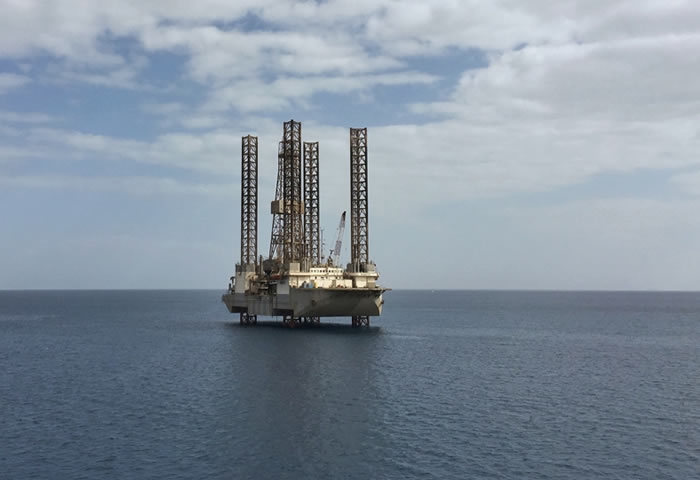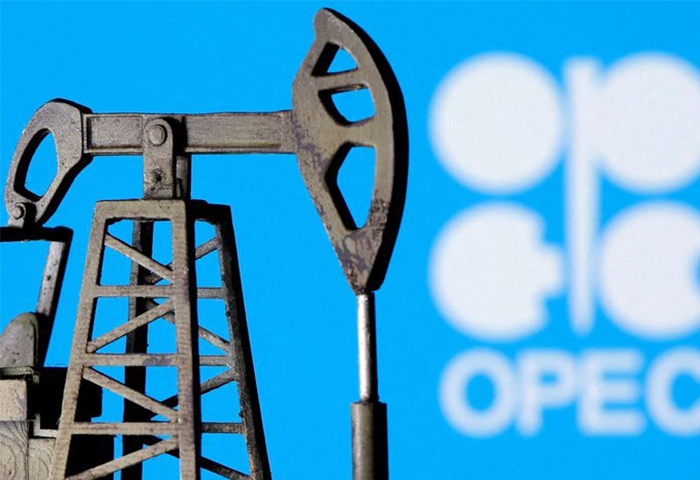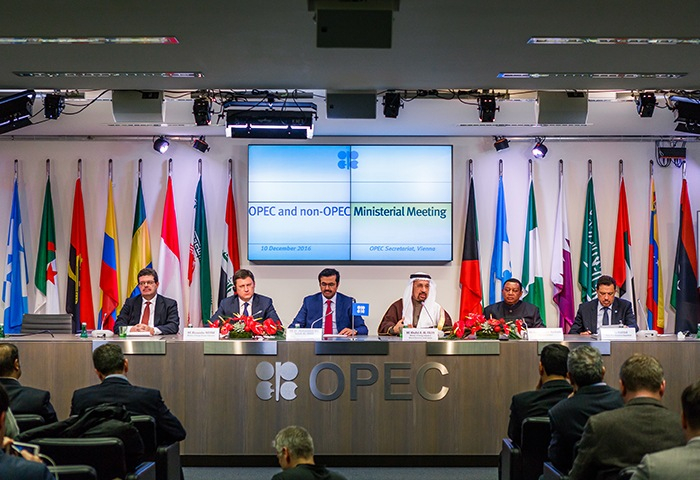Italian energy behemoth Eni has been at the center of many of these major gas discoveries that have occurred recently in the Mediterranean – and nowhere is this better evidenced than in Egypt.
Traditionally, Egypt was a major producer of LPG, but 70% of its production was primarily used for its local market which prevented it from becoming a major player in the energy ecosystem. However, following the success of a number of exploration projects conducted by Eni, the country is now the biggest non-OPEC oil producer in Africa.
In addition to this, Egypt is now also the 3rd largest producer of natural gas in Africa after Algeria and Nigeria who are both OPEC members. The gas discoveries in Egypt have the potential to completely transform the country’s often unstable economic position. Egypt has been dogged by poor infrastructure and a lack of investment over the years but its resurgence as a major player in the exportation of LPG offers hope.
In 2013, if anybody had suggested that Egypt had the potential to become a Mediterranean energy hub, you would’ve been scoffed at and met with widespread ridicule. That was because at that time following a political coup which swept Abdel-Fattah al-Sisi to power the country couldn’t even keep the lights on.
The country was plunged into darkness with blackouts becoming an everyday occurrence and the energy shortage ultimately forced major manufacturing operations to shut down.
However, in 2015, the country’s energy woes dissipated when Eni announced that it had found the largest ever offshore natural gas field in the Mediterranean off the Egyptian coast. At the time of the discovery, the Italian consortium dubbed the gas field as a ‘supergiant’ and claimed that the Zohr project would enable Egypt to be able to serve their own natural gas and energy demands for decades to come.
The Zohr project will go a long, long way to help serve and satisfy the local demand, but crucially it will allow the country to change its reputation from being a net importer to a net exporter and that will inevitably trigger economic benefits that can rejuvenate a country that has already announced ambitious and progressive digital transformation programs.
Eni has announced plans to invest more than $10bn in Egypt by 2022. The company and other firms have struck onshore gas in the western desert, where the government is keen to explore further. “All the offshore works in the Mediterranean are east of the [Nile] delta. The west is unexplored,” says Tarek al-Molla, the petroleum minister.
Mediterranean gas will have no shortage of buyers. Demand is soaring in developing countries. Consumption in China alone grew by 15% last year. But it would be particularly attractive to Europe, which depends on Russian gas - European imports from Russia hit a record high in 2017. However, former Soviet states have expressed their fear that this gives Vladimir Putin, the president of Russia, too much leverage and power over them from a negotiation standpoint. His country has cut off supplies in the past.
However, Egypt and its neighbors now offer an alternative path that can help Europe diversify its suppliers. In order for Egypt to become that key player for Europe, there are a number of significant hurdles and barriers it must overcome first to achieve its economic objectives. Firstly, new liquefaction terminals would create jobs and revenue for Egypt.
Additionally, this would provide a huge boost for Cyprus, where Eni is exploring a Zohr-like field called Calypso off the south-western coast.
New discovery
Eni announced just a few weeks ago a new gas discovery under evaluation in the Nour exploration prospect located in the Nour North Sinai Concession, in the Eastern Egyptian Mediterranean, about 50 km North of the Sinai peninsula.
Eni clarified that the Nour-1 New Field Wildcat (NFW), which has led to the discovery, was drilled by the Scarabeo-9 semi-sub in a water depth of 295 meters and reached a total depth of 5,914 meters.
According to the Italian company, Nour-1 well found 33 meters of gross sandstone pay with good petro physical properties and an estimated gas column of 90 meters in the Tineh formation of Oligocene age. The well has not been tested; however, an intense and accurate data acquisition has been carried out.
“In the concession, Eni is the operator with a 40 percent stake in cooperation with Egyptian Natural Gas Holding Company (EGAS), BP holds a 25 percent stake, Mubadala Petroleum a 20 percent stake while Tharwa Petroleum Company a 15 percent stake of the contractor’s share,” the company noted.
It added that he JV Operator will start the feasibility studies to accelerate the exploitation of these new resources, leveraging the synergies with existing facilities and infrastructures, after finalizing the discovery evaluation. Eni has operated in Egypt through its subsidiary Ieoc since 1954. The company is the country's leading producer with equity above 340,000 barrels of oil equivalent per day that will further grow in 2019 with the ramp up of the Zohr Project to production plateau.
Eni CEO Claudio Descalzi said that Eni seeks to pump investments of $3 billion in Egypt during the upcoming period. Descalzi added that the total investments pumped in Noras and Zohr fields so far have reached $8.4 billion, noting that 70 percent of the company’s investments exist in Egypt.
Egypt have also recently signed several oil agreements for the exploration of oil and gas in several areas, including the Mediterranean, Western desert, Nile Delta and the Gulf of Suez. The number of signed petroleum agreements since 2014 reached 88 and the authority is working on signing 13 new agreements.
Lebanon
Lebanon is another country with huge potential for unearthing gas fields in the Mediterranean – and the country has wasted no time in appointing a consortium of experts consisting of Eni, Total and Novatek to begin their exploration efforts off its rugged coast.
The breakdown of the consortium is as follows: Total 40%, Eni 40%, Russia’s Novatek 20% and all are currently reviewing seismic data and are on track to spud Lebanon’s first offshore exploration well in Block 4 in November or December. In addition to this, the consortium, awarded exploration Blocks 4 and 9 in late 2017 as part of Lebanon’s first bid-round will then head directly to southern Block 9 to drill a second well in the first half of 2020.
Sources close to the project claim that Total and Lebanese authorities regard Block 4 as a significantly less prospective block than 9, but Total plans to use exploration at Block 4 to test the northward extension of the Oligocene and Miocene sandstone formation home of major nearby discoveries off Israel and Cyprus. This also partially explains why Total plans to drill the less promising but less politically contentious asset first, and would suggest that the outcome from Block 4 will inform the strategy taken at Block 9.
Lebanon also has a much larger domestic market in comparison to some of its neighboring countries like Cyprus for example – and it also has easier potential export options. Peak electricity demand stands at around 3.5GW versus 1GW in Cyprus, and this figure is expected to hit 5.2GW by 2030. The country is also planning a multi-billion dollar investment in gas-fired power plants over the next five years. Lebanon’s Petroleum Authority (LPA) says even a 1tcf field would be commercial, though Total may need some convincing on that front.
These are exciting times for countries like Egypt and Lebanon who could be become major energy hubs in the Mediterranean. Egypt in particular is well-positioned to become a major player and the impact for the country’s economy would be seismic. The exploration of gas from the Mediterranean gives those countries a distinct advantage from other producers as it is based so closely to Europe.
As aforementioned above, countries like Egypt and Lebanon provide an alternative option for Europe’s exportation demands and remove the pressure they’ve faced from Russia who’ve enjoyed a monopoly on exportation in the region. In addition to this, the Suez Canal offers increased accessibility and a shortcut to the Indian Ocean and Asia markets and all these factors are destined to make the Mediterranean a major new player in the LPG market.

The East Mediterranean set to change the global landscape in exportation of LPG
/
Oil & Gas
/
Monday, 29 April 2019 12:06
The number of gas exploration discoveries off the coast of the Mediterranean has continued to proliferate over the last few years and the impact of these finds could fundamentally reshape the landscape of LPG exportation on a global scale.
Tags








